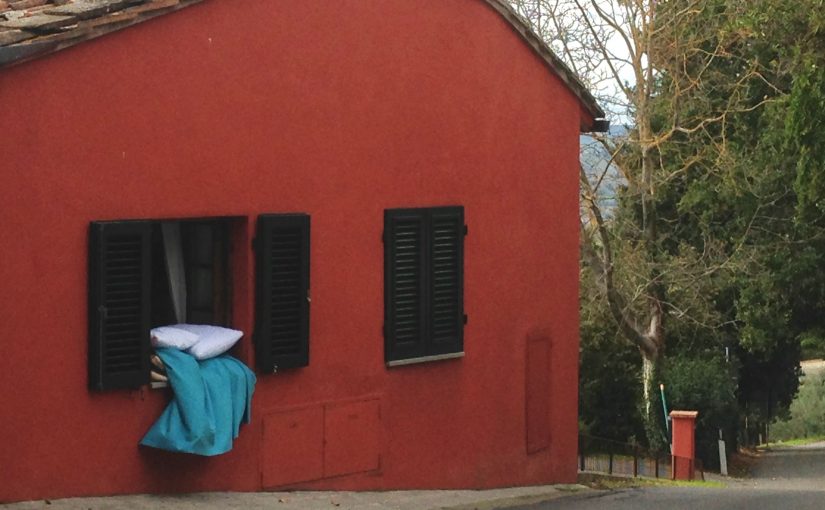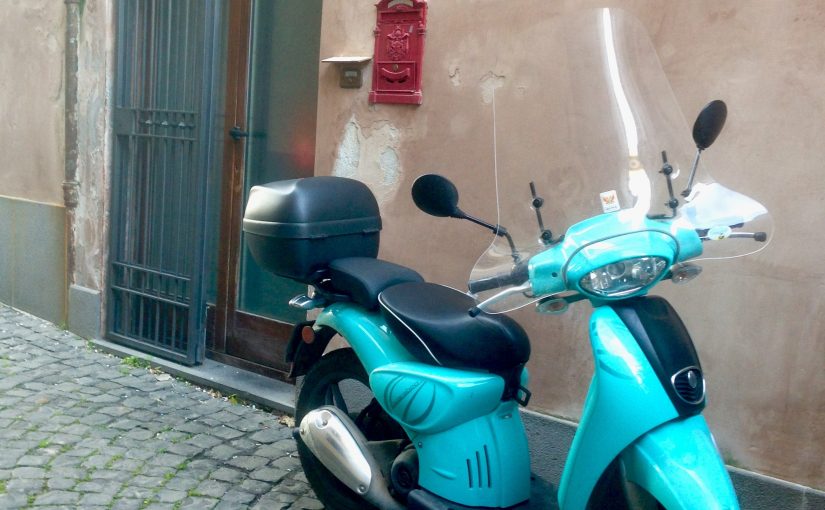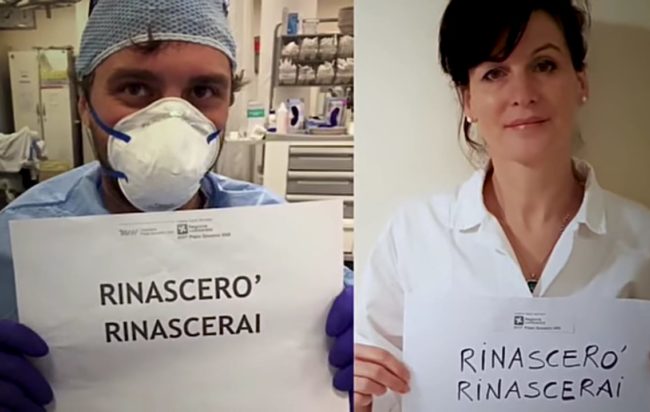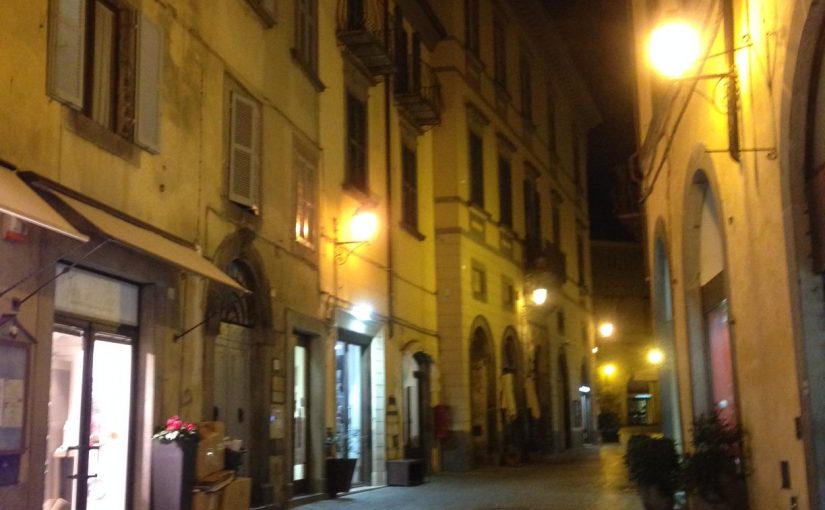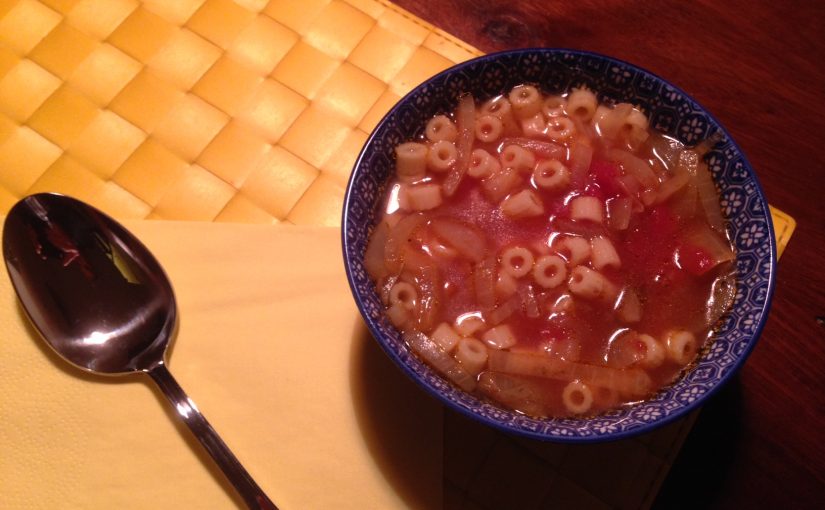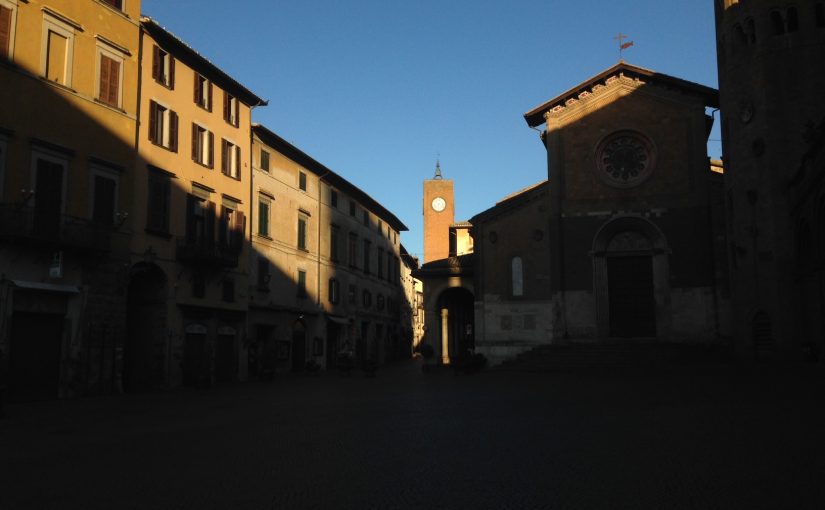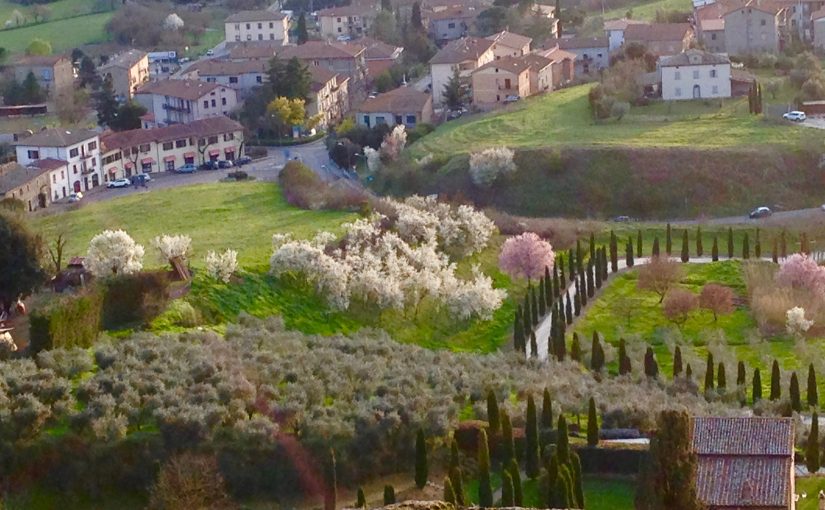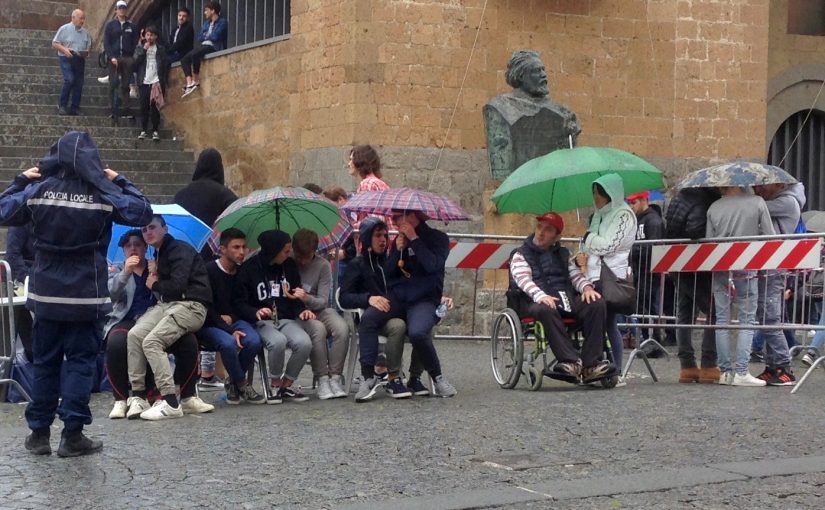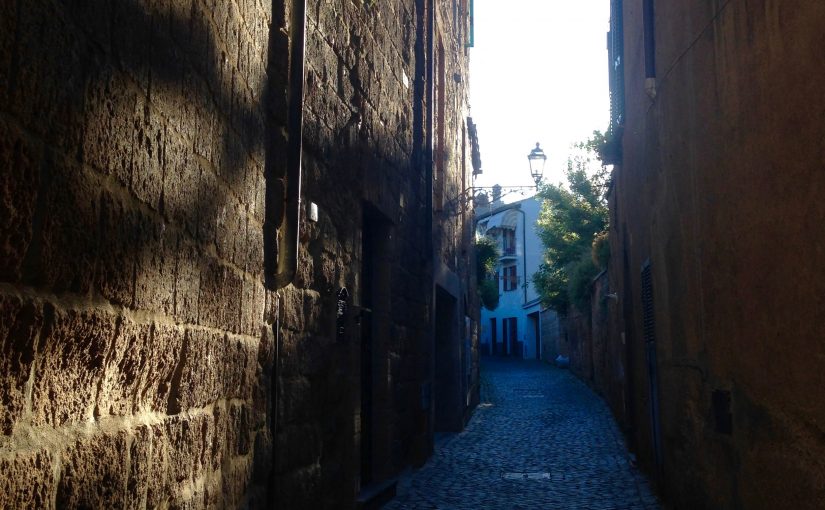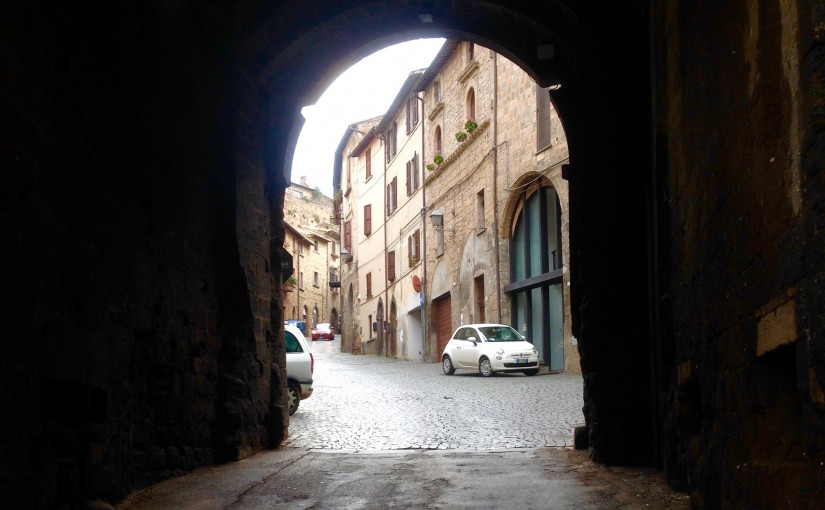After a productive morning spent pretty much in a chair, and lunch (also in a chair) I craved a walk. So, I tuned in WNYC on my phone and hiked the circus minimus for over an hour. It was good, and as you can imagine, the scenery was spectacular.
Okay, that snark is unfair. I’m surrounded on all sides by the exposed tufa walls of old Umbrian buildings, and pass a garden bursting with spring three times a minute, the scenery is spectacular, just under-appreciated as a result of over exposure. I’ve got to choose to see it again with new eyes, to call up my tourist days when every moment here was to be savored. To be honest, even then, I was usually so tired from all the effort it took to get here, that I didn’t savor it as fully as I wanted to, but the memory of how special this town was, is still strong.
It’s still strong because the town is still special, only in different ways. With rather amazing regularity I’ll look out my window of a morning and see that peculiar slant of light falling golden onto stone, and a luscious wave of contentment mixed with wonder washes over my body (or is it my soul?) and the freshness is back.
The font of memory those moments evoke goes back decades and isn’t confined to La Rupe.
A fruttavendolo in San Casciano, 1995, his hair still wet from a shower, who gave his attention to my question – about something – as if I were extemporaneously composing a sonnet worthy of Petrarch. The gentleman, on the same trip but in Siena, whose job it was to manage a public parking lot, explaining with glee how we could park in blue spaces and pay, or in white and park for free, and (special for today) as long as we wanted. The red house in La Romola with a blue green comforter airing at a street-side window. The dome in Montefiascone as viewed from the Teverina. The black sand of Lago di Bolsena, rich between my toes.
Although my first visit to Orvieto occurred in 1975, I have no reliable recollection of it. My first legitimate memory of this place is from a night in late July, 1997. I had rented a large, old farmhouse in the village of Roccalvecce, about forty minutes from here, and organized a five-week vacation with a rotating group of American friends. We had two cars to share at that point, and it was during our first week, so we were still getting used to which direction to go for everything – and I mean, everything.
The trip of the day was to Assisi. We spent a full afternoon, along with several thousand other non-residents, and departed for home base around sunset. I drove one car, my friend Page drove the other. Page’s mother, Mary, rode in my back seat. Randy, who immediately pronounced herself an inexperienced navigator, sat in the front with a folded map (on paper, remember those?) But the map was not going to be necessary. Page had the return route figured out, so we would just follow and all would be well.
We lost Page instantly in the crush of vehicles eager to get out of Assisi before sundown. So, the map was unfolded, and off we went. All was well until we got to Attigliano, the train stop handiest to Roccalvecce. I’d been there and back several times already, picking up guests as they arrived, so it should not have been an issue which way to turn at the T intersection. But it was. It was late, there was confusion, all mine, and I couldn’t remember. Randy swiveled the map, traced the road ahead of us and directed me left. At first, it seemed fine. Many kilometers later, on the darkest, twistiest country roads I had ever experienced, it became obvious we were very, very lost.
Mary is from Georgia and has a beautiful, luxurious accent. Every town limit sign we approached she would ask, “Now David, when we get to (Baschi, Montecchio, Tenaglie) will anything look familiar?” Every time she asked, my shoulders inched up towards my neck and my face burned. I was hosting this trip, and our first outing I had led them into a dark, spooky, unknowable landscape filled with unpronounceable names. Every time we passed a town’s sign, Randy would scramble to find it on the map, announce that we were really, really in the wrong part of Italy, and suggest a remedy that led to our being even more lost than before.
Suddenly, we found ourselves on an ascending road to a town that introduced itself with triple-branched nineteenth century street lights, and a sign that read, Orvieto.
“Orvieto! We went east instead of west at Attigliano! Now I know where we are! Looks like a nice town. We’ll have to come back.” Had I been alone, I would have found a room and stayed. The place already had me, it was just thinking about how to reel me in.
Everyone here who wasn’t born here has their Orvieto origin myth. That’s mine. When the spring riot in my garden looks a bit too familiar to be interesting, I remember the climb late one July night when all we did was turn around in Piazza Cahen and leave. And the town was still enchanting.
The peculiar slant of morning light falling golden onto stone. The days can still be that fresh and magical, if I’m willing, even when viewed from my tiny courtyard. Breathe. See for the first time. Listen, rapt, hair still wet from a shower.
